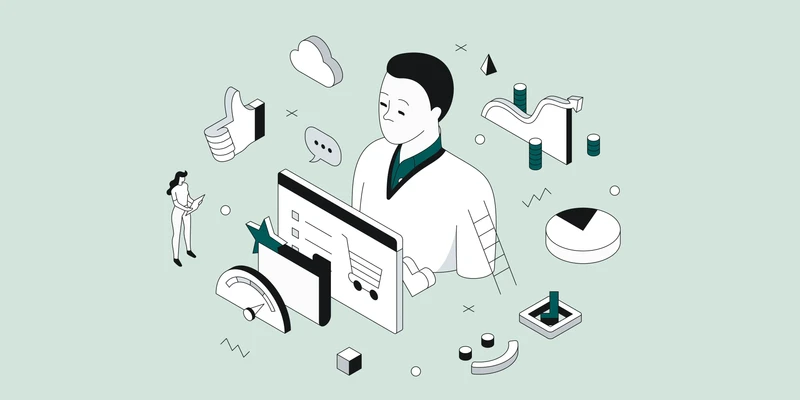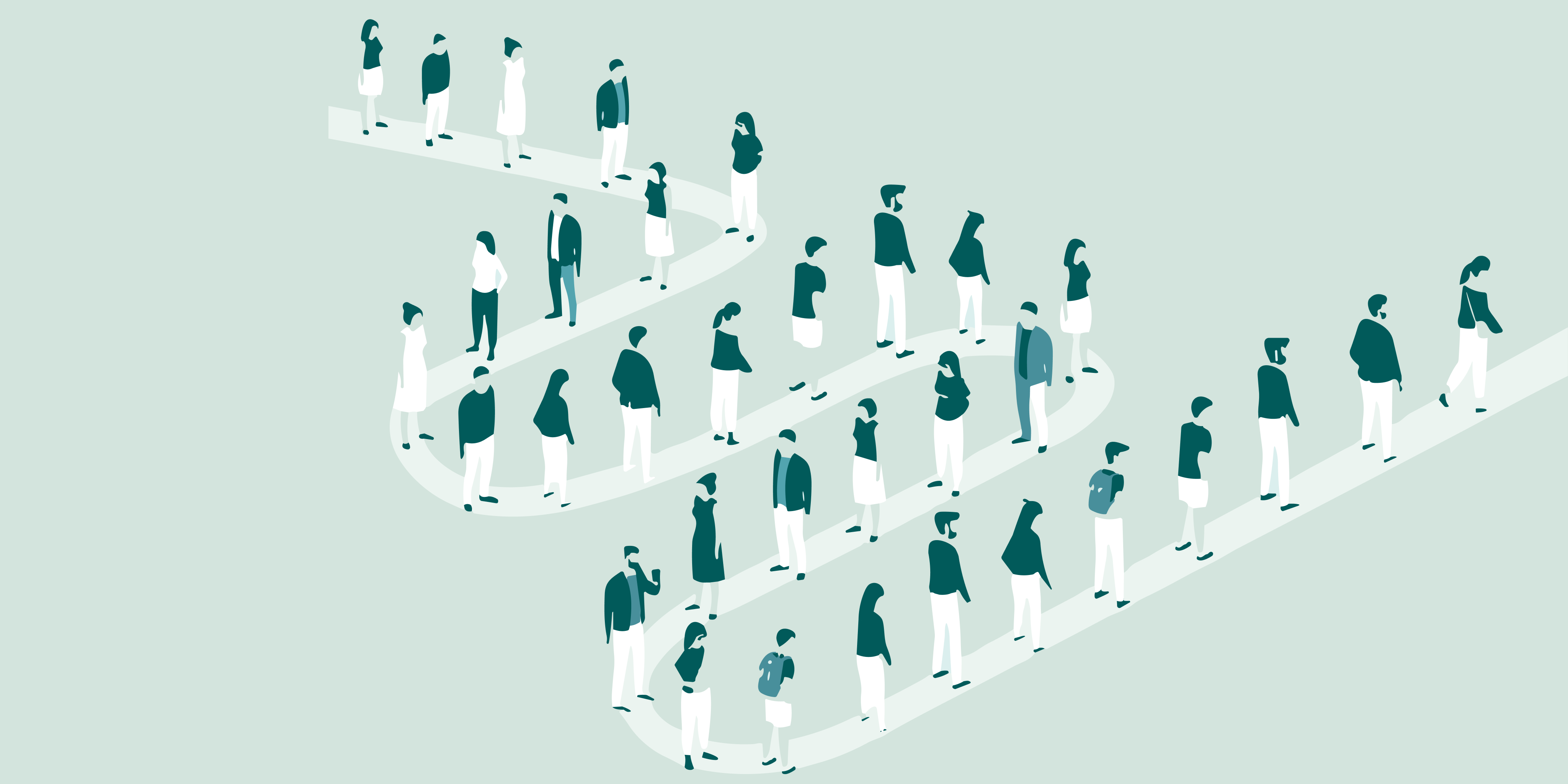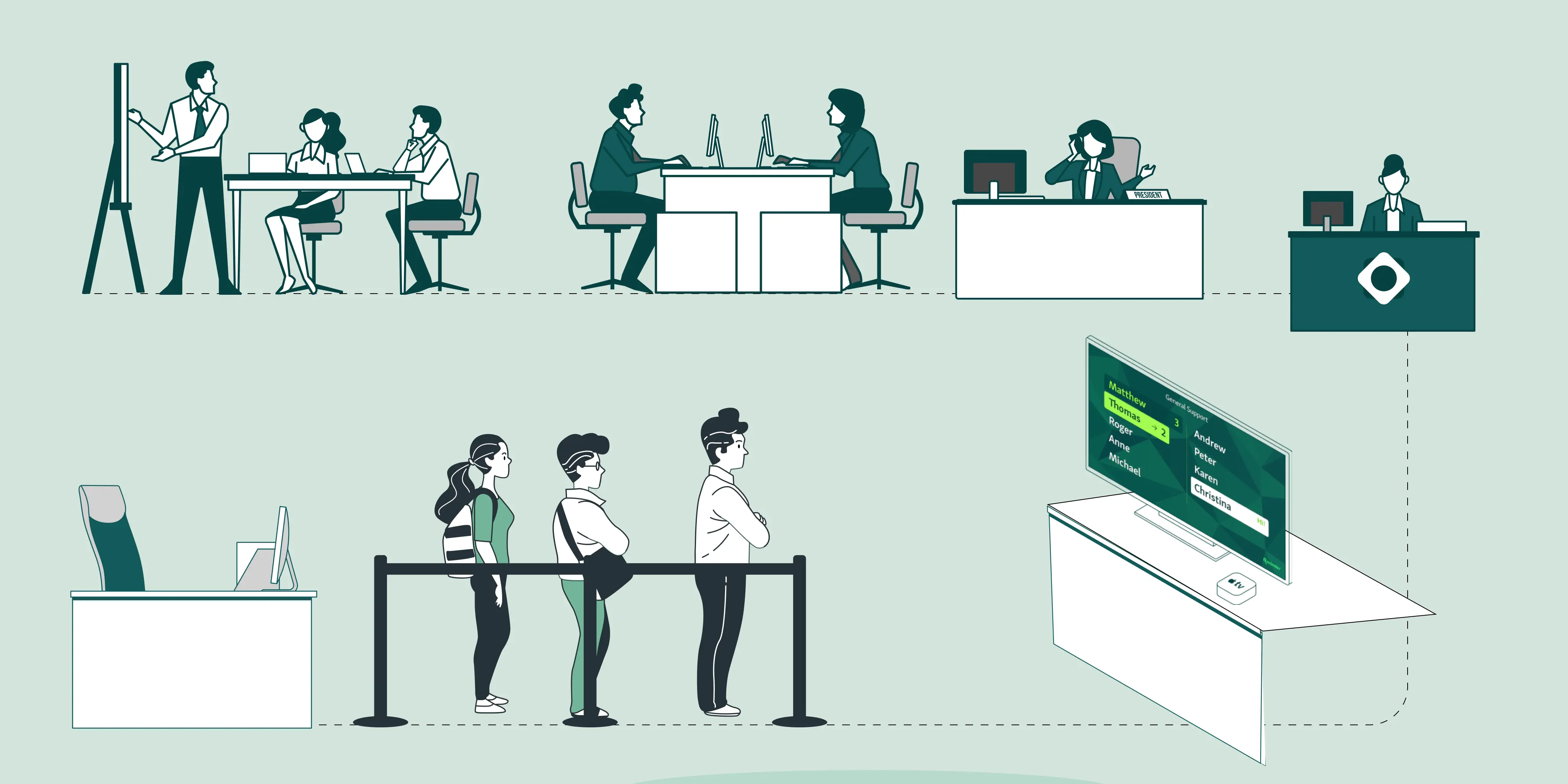Citizens expect public services to be both efficient and customer-friendly - just like those provided by the private sector. They want government services for renewing a driver's license or requesting a permit to be respectful of their time, provide straightforward and clear information and be efficient.
How many of us have had to put up with traditional public office practices in DMV or City Hall, or official processes in public agencies, where the process took longer than expected, and the actual service, contributed to negative public interactions, and imposed undue stress on the staff?
Small changes can produce a big difference. In this blog we will discuss five tangible aspects of the total service experience in government, from the front desk to the service counter and how public organizations can serve citizens better, faster and more personally.
Why Government Customer Experience Matters More Than Ever
Improving government customer experience does not rest solely on reducing queue wait times or auto-filling forms. It is about the way we feel when we interact with government services, when visiting the DMV, going to city hall, or calling a government office. Daily interactions matter in establishing public trust and confidence in government.
When customer experience in government gets better, there are multiple potential benefits:
Citizens will be more likely to respect the rules and follow through on their obligations.
Interactions between staff and client visitors are smoother, less stressful, and more respectful.
Greater satisfaction in a final experience will generally lead to deeper levels of civic engagement.
When consideration of customer experience is applied to public sectors, there is an opportunity for an improved foundation for relationship building between the government agency and the community they serve. It is already a significant first step towards improved outcomes for all.
5 Ways to Improve Customer Experience in Public Sectors
Improving the customer experience in government is no longer optional. Here are five practical ways to modernize public service delivery and better meet the needs of today’s residents.
1. Streamline Queues With Digital Solutions
One of the ways to maximize the experience for customers at the DMV and public services is to rethink queue management. Waiting in long lines and stuffy waiting rooms is more inconvenient than it has to be, and virtual queueing allows visitors to check in remotely from anywhere and allow them to wait on their own terms.
When considering a virtual queue management solution for a government context, choose a solution that makes the implementation simple for government offices. Virtual queue management tools like Qminder allow citizens to check in through their phone, kiosk at the entryway, or through a website. This approach reduces confusion and complication by allowing for a remote check-in, while also allowing the customer experience to feel more organized and transparent.
Benefits:
Digital check-in that replaces physical lines
SMS notifications of live wait time
Convenience for citizens, allowing them to wait anywhere rather than in the lobby
Employees interact and provide service versus crowd management
More even traffic flow throughout the day
Example:
Many city halls have seen fewer walkouts and improved resident feedback after offering both appointments and walk-in options, especially during peak periods like permit renewals or election registration.
2. Offer Appointment Scheduling and Walk-In Flexibility
Enhancing the customer experience in government typically starts with providing people with various levels of control over how they access services. By offering appointment scheduling alongside walk-in options, agencies can provide the necessary level of service to accommodate different customer needs, both for those who prefer to schedule an appointment, and for those seeking help on an unanticipated basis.
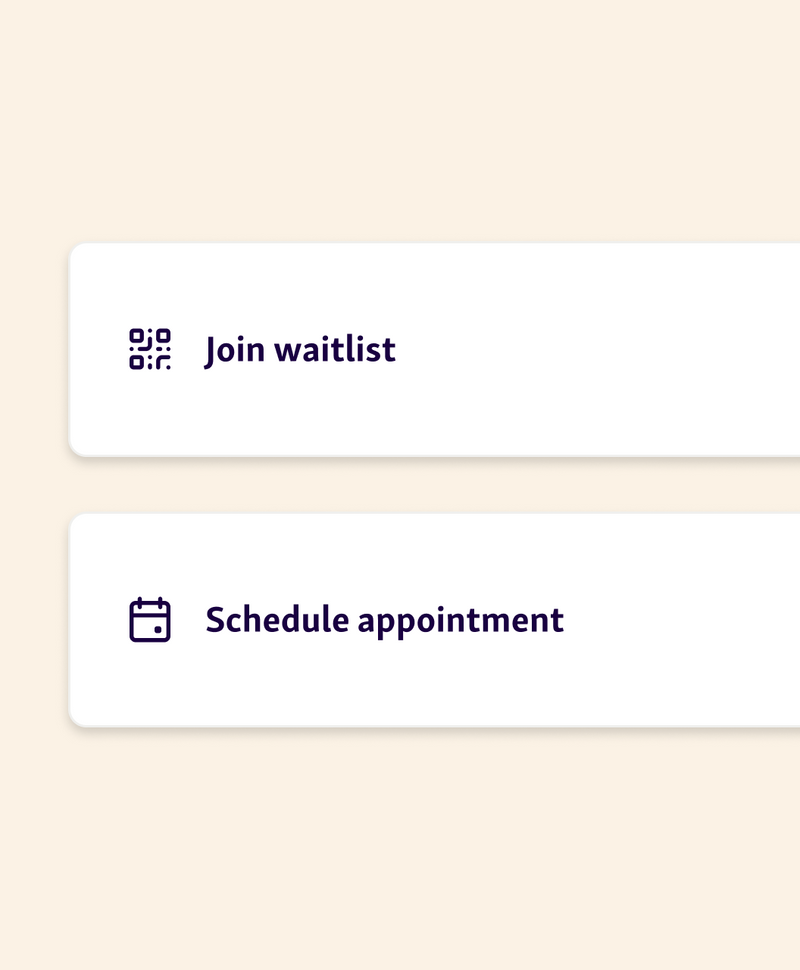
Providing customers different ways of accessing services provides them with increased flexibility, helping to reduce no-shows, eliminate crowding, and ultimately clarify how staff prepare for the day. Different levels of access are especially beneficial in managing high volume services like DMVs or permit offices, as demand typically varies throughout the week and staff can effectively prepare based on customer choices.
Key benefits:
Reduces wait times and evenly spreads visitor traffic
Lets staff prepare for specific appointment types
Makes services more accessible for different demographics
Lowers frustration for walk-in visitors during peak times
Improves transparency around service availability
Pro tip:
Use reminders and confirmations for scheduled visits to prevent no-shows while offering real-time updates for walk-ins to manage expectations.
3. Improve Communication With Real-Time Updates
Effective communication is at the forefront of a better customer experience in public sector organizations. Whether we’re talking about a town hall, or a DMV, no citizen wants to feel out of the loop. Real-time updates establish better expectations and reduce confusion and idle time, which can make even the longest of waits feel less tedious.
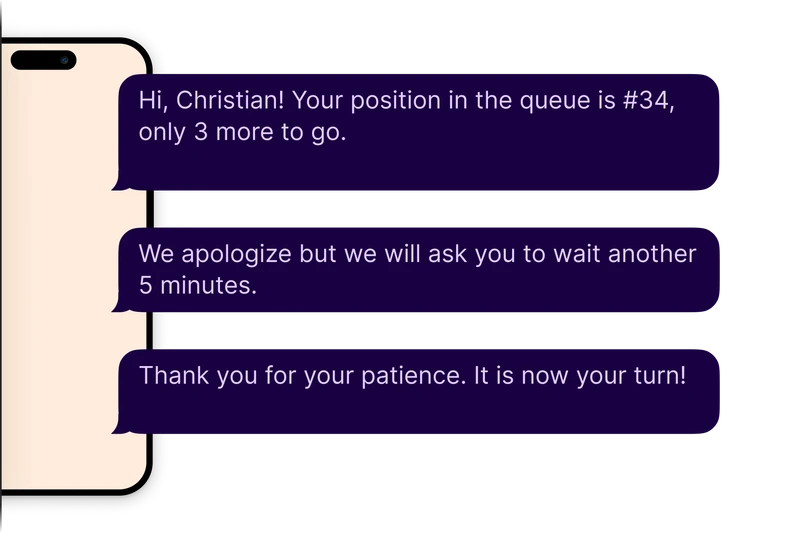
Using digital communication tools, agencies can send two-way messages to citizens through SMS or email while also communicating with visitors in-office and through announcements and signage. Keeping your visitors in the loop promotes trust and nurtures a sense of being respected and seen.
Key benefits:
Keeps visitors informed of delays or changes in real time
Reduces uncertainty and wait anxiety
Improves service flow with better visitor readiness
Decreases the need for repeated staff inquiries
Strengthens public perception of government efficiency
Example:
A city clerk’s office that uses automated SMS updates saw a drop in complaints and a boost in satisfaction ratings, simply by making people feel informed.
4. Use Self-Service Kiosks for Faster Check-Ins
Self-service kiosks are changing the way citizens engage with public offices by making the check-in process quicker, simpler and more accessible than ever. Visitors can arrive, check in, select their service, or update their information without waiting for someone on staff to assist and allows public office employees to focus their time on more complex needs.

With easy to understand multilingual interfaces, and intuitive navigation, kiosks are effective in overcoming both language and accessibility barriers; especially important in a government context where visitors are often a diverse population. Kiosks are also great for citizens who often find themselves visiting a public office and know exactly what they want to do.
Key benefits:
Speeds up visitor intake and reduces bottlenecks
Minimizes administrative burden for frontline staff
Reduces lines at service desks
Offers 24/7 service in some locations
Enhances accessibility with multilingual and user-friendly design
Pro tip:
Place kiosks near the entrance with clear signage to encourage use, especially during peak hours.
5. Collect and Act on Citizen Feedback
Feedback is one of the most underutilized tools in improving the customer experience in government. By collecting input directly from visitors after their service—whether through a quick kiosk survey, mobile prompt, or email—agencies gain valuable insight into what’s working and what’s not.
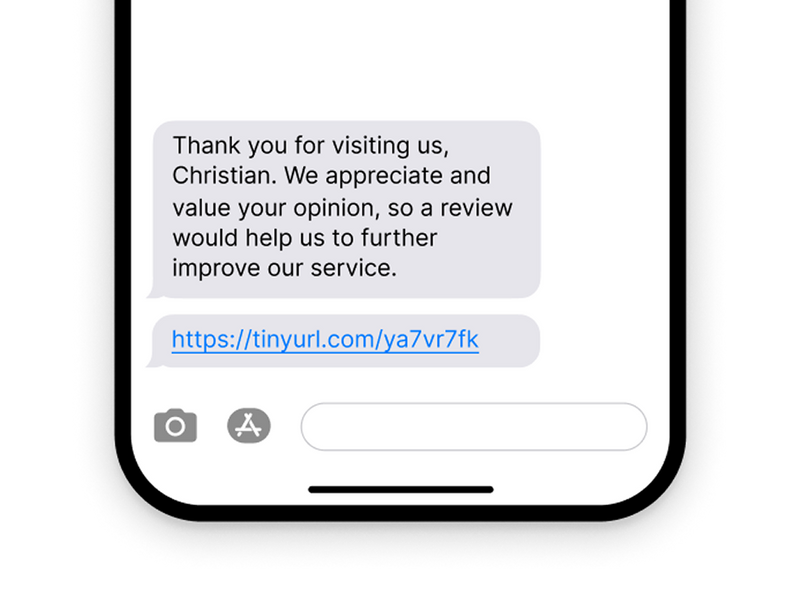
More importantly, acting on this feedback shows transparency and a commitment to continuous improvement. This not only boosts satisfaction but also helps rebuild public trust over time, something critical for improving the overall government customer experience.
Key benefits:
Highlights service gaps and training needs
Builds trust through responsiveness
Helps prioritize improvements based on real data
Supports long-term service design decisions
Encourages citizens to stay engaged
Example:
A city hall introduces tablet-based exit surveys and discovers that most negative reviews stem from unclear signage, an easy fix that improves satisfaction scores within weeks.
Helpful read - How to Improve Customer Experience in Lines
Case Example of Great Customer Experience in Government
Across public sector services, agencies are finding new ways to improve the customer experience in government. From DMVs to city halls, digital tools are helping agencies modernize outdated systems, cut wait times, and make interactions smoother for both staff and citizens. Here are a few real-world examples:
City Hall: Manhattan Beach’s Customer Experience Makeover
The City of Manhattan Beach in California recognized that pen-and-paper sign-ins were slowing everything down. Seeking a smarter solution, they tried multiple systems and chose Qminder for its ease of use, data capabilities, and visitor transparency features.
Here’s what changed:
Self check-in via iPads with keyboard options for accessibility
Greeters to assist visitors and personalize service
Large TV screens showing real-time queue info
Digital performance tracking to guide staffing
By modernizing their front desk, the city is building a more citizen-friendly and efficient experience—making them a model of government customer experience done right.
Modernizing the DMV Experience and Beyond
Improving the customer experience in public sectors doesn’t require a complete overhaul, ust the right first steps.
By streamlining queues, offering appointment flexibility, enhancing communication, using self-service kiosks, and collecting feedback, agencies can make services like the DMV experience far more efficient and citizen-friendly. The key is combining smart technology with an understanding of real human needs.
If you're looking for a proven solution to bring these improvements to life, Qminder offers the tools and flexibility you need. It's a powerful platform built to elevate the government customer experience.
Start your free trial today and make public service better for everyone.
Agencies are able to offer digital tools with simple, intuitive interfaces and multilingual capabilities. They can also combine self-service with human assistance where necessary. Access also means screen-reader compatible and having direct assistance for those who might be strangers to technology.
Some meaningful metrics include average wait time, appointment no-show rate, citizen satisfaction with surveys, repeat visits, and issue resolution time. Tracking these can provide a picture of counter-wise progress and what can be done better.
Qminder is the best virtual queue management software for government services and offices. It is easy to set up and customize, and it has been trusted by public sector agencies to improve efficiencies and to enhance citizen satisfaction.

